Part Twenty Nine. Because Puerto Rico’s death toll from 2017’s Hurricane is a metric of economic development, newspapers pressured to up the numbers. For the readers’ convenience, this column of FEBRUARY 27, 2018 is a sample of that pressure.
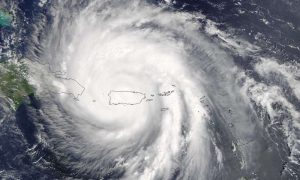 UTopiAH. 64 death certificates or 2,975 deaths by survey? This is Part 29 of a series for comparing life expectancy, because death rates are the new metric of economic development. Included are medical conditions ranking Utah’s #1 for health. When nose counts didn’t give the answer wanted, the pressure was to turn to surveys, sampling one in 344 or so. Where should a memorial be built listing names from the Puerto Rico Hurricane?
UTopiAH. 64 death certificates or 2,975 deaths by survey? This is Part 29 of a series for comparing life expectancy, because death rates are the new metric of economic development. Included are medical conditions ranking Utah’s #1 for health. When nose counts didn’t give the answer wanted, the pressure was to turn to surveys, sampling one in 344 or so. Where should a memorial be built listing names from the Puerto Rico Hurricane?
Part Twenty Nine. Because Puerto Rico’s death toll from 2017’s Hurricane is a metric of economic development, newspapers pressured to up the numbers. For the readers’ convenience, this column of FEBRUARY 27, 2018 is a sample of that pressure.
Backstory. In September 2017, two Hurricanes moved, hit, drowned over Puerto Rico. Storms, disasters, commotion bring eyes to the media, boosting ratings. The worse the disaster the better the coverage. Hurricanes destroy by a sea surge, flying debris, and 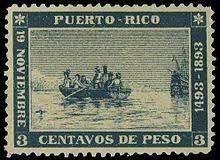 tornadoes. Being warned, the Puerto Ricans population of just under four and a half million sought shelter. Power was lost, homes destroyed, roads blocked. In the weeks afterward, physicians certified 64 storm deaths caused by the storms sea surge, drowning and being struck by wind debris. Each death certificate was completed by a coroner, with name, gender, description, date, and cause of death. In 2015 28,085 deaths in Puerto Rico were reported on death certificates. See Part 25 for the breakdown of causes in 2015. Unsatisfied, hoping or expecting more deaths, media demanded and pushed for an increase in storm deaths count. In response to the political pressure, the government of Puerto Rico ordered a fresh report. Over the next year, in order to increase the count, the definition for Puerto Rican storm deaths were broadened beyond
tornadoes. Being warned, the Puerto Ricans population of just under four and a half million sought shelter. Power was lost, homes destroyed, roads blocked. In the weeks afterward, physicians certified 64 storm deaths caused by the storms sea surge, drowning and being struck by wind debris. Each death certificate was completed by a coroner, with name, gender, description, date, and cause of death. In 2015 28,085 deaths in Puerto Rico were reported on death certificates. See Part 25 for the breakdown of causes in 2015. Unsatisfied, hoping or expecting more deaths, media demanded and pushed for an increase in storm deaths count. In response to the political pressure, the government of Puerto Rico ordered a fresh report. Over the next year, in order to increase the count, the definition for Puerto Rican storm deaths were broadened beyond 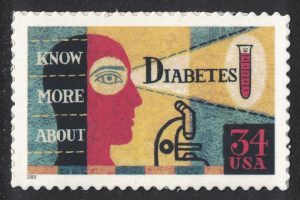 wind and water, to include suicides, sepsis, dialysis, diabetes, heart attack, and medicine. Of necessity, Puerto Rico’s coroners were declared incompetent to complete death certificates. Also, rather than use the newly incompetent death certificates, each with a deceased’s name, new statistical surveys were used by sampling one in six hundred households, and then multiplying the results by six hundred. No individual names, individual genders or causes, but a new an higher count. The 2018 statistical survey listed storm deaths at 2,975, an accuracy not supported by significant numbers in the survey. The conclusion noted that deaths are a metric of economic activity, and that the increase in storm deaths was due, not to drowning or debris striking, but to failure of the health system, missing doctors, missing ambulances, missing electrical and utility grid. The missing doctors were not due to a failure of the emergency response, but to generations of failure to train doctors, restrictions on medical school seats. Note no one complained about an absence of lawyers, because law schools annually graduate three times the lawyers as medical schools graduate physicians. Likewise no mention regrets a shortage of insurance salesmen, car dealers, handy-men, or other vocations, just health care.
wind and water, to include suicides, sepsis, dialysis, diabetes, heart attack, and medicine. Of necessity, Puerto Rico’s coroners were declared incompetent to complete death certificates. Also, rather than use the newly incompetent death certificates, each with a deceased’s name, new statistical surveys were used by sampling one in six hundred households, and then multiplying the results by six hundred. No individual names, individual genders or causes, but a new an higher count. The 2018 statistical survey listed storm deaths at 2,975, an accuracy not supported by significant numbers in the survey. The conclusion noted that deaths are a metric of economic activity, and that the increase in storm deaths was due, not to drowning or debris striking, but to failure of the health system, missing doctors, missing ambulances, missing electrical and utility grid. The missing doctors were not due to a failure of the emergency response, but to generations of failure to train doctors, restrictions on medical school seats. Note no one complained about an absence of lawyers, because law schools annually graduate three times the lawyers as medical schools graduate physicians. Likewise no mention regrets a shortage of insurance salesmen, car dealers, handy-men, or other vocations, just health care.
George Washington University’s Public Health School Is Looking for the Lessons in Hurricane Maria
“We are now at a point where we are going to be able to do a reasonable job of data collection,” the school’s president says.
WRITTEN BY HELEN CAREFOOT | PUBLISHED ON FEBRUARY 27, 2018
Last week, George Washington University’s Milken Institute School of Public Health announced that it will conduct an independent review of fatalities caused by Hurricane Maria, the massive storm that ravaged Puerto Rico last Steptember.
The storm’s official death toll sits at 64, but media reports have put it at closer to 1,000. Much has been made about the discrepancy, including accusations that the government purposely undercounted. Lynn Goldman, the Milken School’s president, says the investigation aims to bring clarity to the count. In an interview, she tells Washingtonian that Puerto Rico Governor Ricardo Rosselló‘s office reached out to the school about reviewing the true extent of the hurricane’s damage and the government response to the resulting devastation.
“We don’t know what the number will be until we do the investigation,” Goldman says. “We will call it as we see it.”
Beyond establishing a more accurate death toll, the research team will make disaster preparedness recommendations for future use and will review the Puerto Rican government’s response to the storm.
Here’s what Goldman had to say about this long-term project.
What is the timeline of this project?
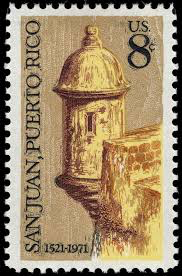 The project is designed in two phases: the first phase will be three months and it involves the enumeration of deaths and calculation of death rates. It’ll be funded by the Puerto Rican government and will cost $305,000. We will coordinate with them but they will have no say over the investigation. The second phase findings will be released in one year and will also examine how the Puerto Rican government initially handled counting the fatalities. The second phase will cost about $1.1 million and will be funded primarily through grants.
The project is designed in two phases: the first phase will be three months and it involves the enumeration of deaths and calculation of death rates. It’ll be funded by the Puerto Rican government and will cost $305,000. We will coordinate with them but they will have no say over the investigation. The second phase findings will be released in one year and will also examine how the Puerto Rican government initially handled counting the fatalities. The second phase will cost about $1.1 million and will be funded primarily through grants.
The second phase will be more labor intensive but important in terms of being able to actually get down to a more granular level. It’ll involve further investigation and we’ll be talking to family members and hospitals and clinic staff. We’ll look into deaths that are suspected to involve the hurricane. Sometimes it doesn’t actually say that in the records, so we would like to be able to make sure that we are very much accounting for hurricane-related mortality. We need to get reports from the community about some of these. Because the island’s medical care system can be impaired because of the hurricane, it creates an issue of reporting mortality.
It’s been months since the storm. Are you concerned that too much time has passed?
It’s a good time to do it now. If you’re there in the immediate aftermath it would’ve been hard to get around island and do an investigation. The roads are open. But all you have to do is fly over the island and see all the blue tarp and anywhere between 40 and 45 percent of the island is still not electrified. Many people in the capital still don’t have power. But we are now at a point where we are going to be able to do a reasonable job of data collection.
Who else is involved with this?
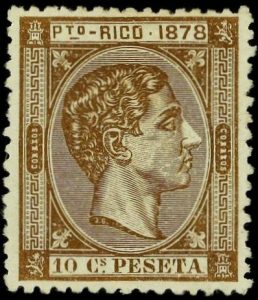 We have several faculty involved. Dr. Carlos Santos-Burgoa, an epidemiologist with expertise in global health in the Americas, will lead the team and will be assisted by Ann Goldman (no relation). Goldman is a study coordinator who just finished her dissertation in epidemiology. She is from Puerto Rico and both are native Spanish speakers. Language is very important in doing research because there can be imprecision in translating and it’s important to communicate properly. A number of other faculty will be peripherally involved. Peak hurricane season in the Western Hemisphere starts in mid-June and the team hopes to have information to share to prepare for future hurricanes.
We have several faculty involved. Dr. Carlos Santos-Burgoa, an epidemiologist with expertise in global health in the Americas, will lead the team and will be assisted by Ann Goldman (no relation). Goldman is a study coordinator who just finished her dissertation in epidemiology. She is from Puerto Rico and both are native Spanish speakers. Language is very important in doing research because there can be imprecision in translating and it’s important to communicate properly. A number of other faculty will be peripherally involved. Peak hurricane season in the Western Hemisphere starts in mid-June and the team hopes to have information to share to prepare for future hurricanes.
You’re collaborating with the University of Puerto Rico. How will that work?
Going out and interviewing people for case finding will require some actual people on the ground to help. We can send people from DC to do that, but we can also train people at that school so they can help out. They were not selected to do [the study] and they understand why, but they are very open to coordinating and collaborating. We are meeting with them and they were enthusiastic. If [Rosselló] had turned to them there would be members of the public who would say, well you are funded by the state budget.
What kind of impact do you think this will have for future hurricane planning?
We learn something from each storm. In Hurricane Katrina, they had to evacuate people from critical care by boat. They had to move patients to other medical facilities far away. We learned that their medical records have to go with them because people on the receiving end didn’t understand a lot about their medical histories. This led to a change in process that is used by emergency management folks and now they have to bring the records with them. In Hurricane Sandy, we learned that a lot of people at home are medically dependent on electricity. We need to be identifying who those people are and making sure that public health gets to them because they are very much at risk if they’re oxygen dependent and if electricity goes down.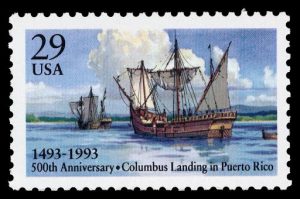
It’s important to build because these lessons can be used nationally. The lessons learned from Hurricane Katrina were applied when Hurricane Ike hit Galveston and when Hurricane Harvey hit. Medical care facilities can be vulnerable, and in learning how to do that and being prepared, we forget things that are even obvious. Part of preparedness for these events means there has to be a drill—you have to make a lot of decisions and it’s moving fast so mistakes happen. I’m not sure what all we’re going to learn from this one but I’m pretty confident we’ll learn more. The whole system is getting better at response but society and the ways in which we live are getting more complicated.
Helen Carefoot WEB FELLOW Helen joined Washingtonian in January 2018. She studied Journalism and International Relations at the University of Southern California. She recently won an Online News Award for her work on a project about the effects of the Salton Sea, California’s greatest burgeoning environmental disaster, on a Native American tribe whose ancestral lands are on its shores. Before joining the magazine, Helen worked in Memphis covering education for Chalkbeat. Her work has appeared in USA Today, The Desert Sun, Chalkbeat Tennessee, Sunset Magazine, Indiewire, and others.
Disclaimer: The author of each article published on this web site owns his or her own words. The opinions, beliefs and viewpoints expressed by the various authors and forum participants on this site do not necessarily reflect the opinions, beliefs and viewpoints of Utah Standard News or official policies of the USN and may actually reflect positions that USN actively opposes. No claim in public domain or fair use. © Edmunds Tucker.
Utah Standard News depends on the support of readers like you.
Good Journalism requires time, expertise, passion and money. We know you appreciate the coverage here. Please help us to continue as an alternative news website by becoming a subscriber or making a donation. To learn more about our subscription options or make a donation, click here.
To Advertise on UtahStandardNews.com, please contact us at: ed@utahstandardnews.com.


Comments - No Responses to “Part Twenty Nine. Because Puerto Rico’s death toll from 2017’s Hurricane is a metric of economic development, newspapers pressured to up the numbers. For the readers’ convenience, this column of FEBRUARY 27, 2018 is a sample of that pressure.”
Sure is empty down here...